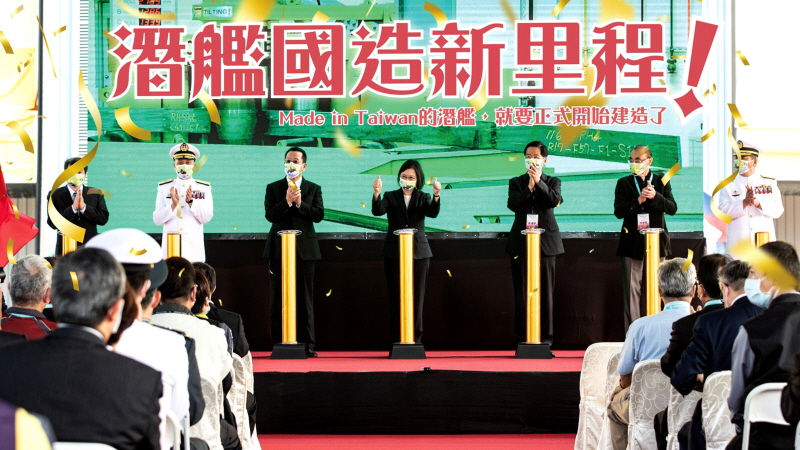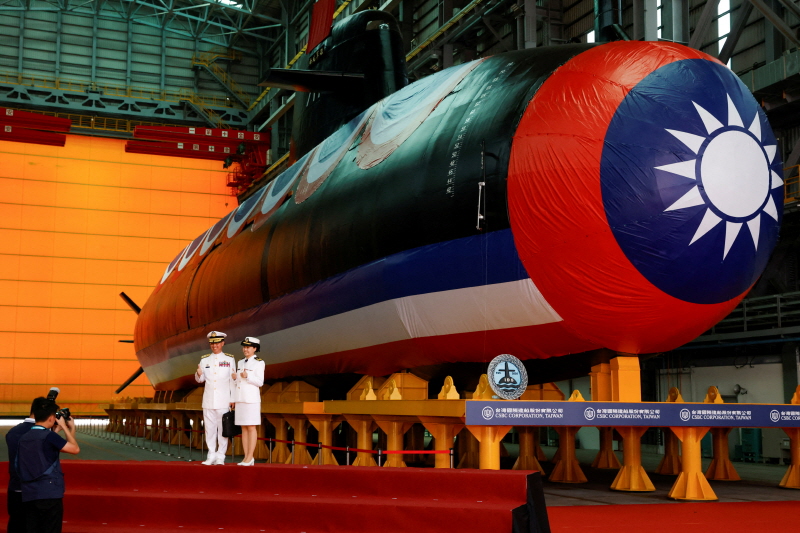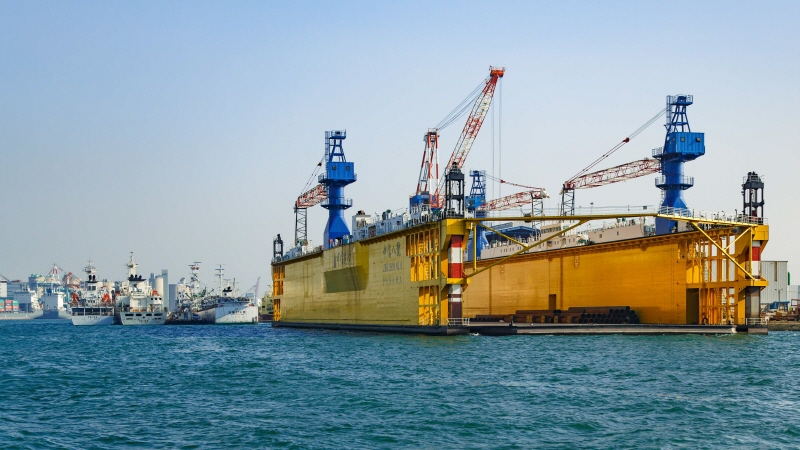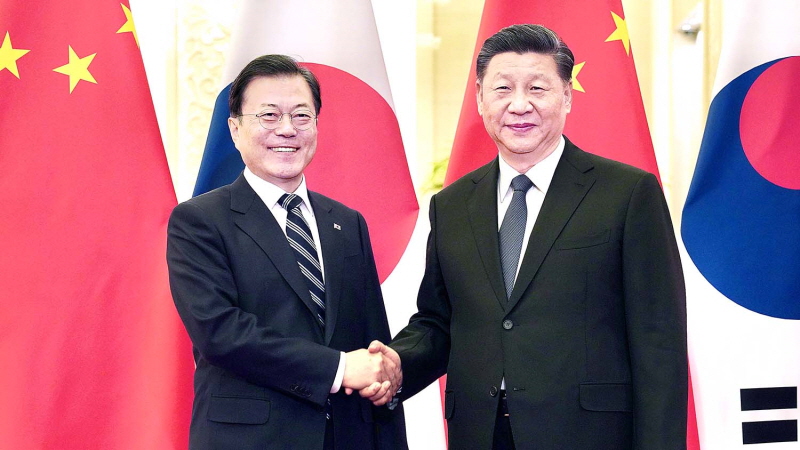[Second in a three-part series]
In early 2019, an intriguing rumor began circulating among the employees at Daewoo Shipbuilding & Marine Engineering (DSME, now Hanwha Ocean) in Geoje, South Gyeongsang. It was said that a company founded by a former Navy colonel was gathering technical experts in Taiwan to build submarines. An executive at Hanwha Ocean, who met with the JoongAng Ilbo, a leading Korean newspaper affiliated with the Korea Daily, in Geoje last month, vividly remembered the period.
At that time, it was rumored that over 30 to 40 employees had received calls from this company, and in reality, more than 10 former and current employees joined the company and moved to Taiwan. Among them were several veterans with extensive experience in submarine construction and processes.
The company in question, SI Innotec, is now embroiled in the “Korean submarine blueprint leak to Taiwan” scandal. Last year, police charged Cho and Choi, who joined SI Innotec around that period, with leaking the blueprints. Cho, who retired from DSME in 2016, worked in the special ship hull construction department, while Choi was part of the process management team. Another Choi, who had served as a Navy colonel and worked in DSME’s submarine hull structure department, also joined SI Innotec at that time.

The rumor quickly caught the attention of the National Intelligence Service (NIS). Both the Defense Security Command and the Defense Acquisition Program Administration (DAPA) became aware that this company was attempting to participate in Taiwan’s submarine project. However, no action was taken at the time due to a lack of clear evidence.
An official from the Defense Security Command said, “Although the command was aware through intelligence, they did not formally investigate.”
An official from Hanwha Ocean mentioned that they reported to the NIS after discovering that some employees were attempting to move to SI Innotec and K Corporation. “At that time, there was no internal audit or other measures taken,” the official said. “We had limited options.”
[(1)Unraveling Taiwanese submarine spy mystery: Did China weigh on South Korea?]
In 2021, SI Innotec was indicted for illegally exporting submarine equipment to Taiwan and went to trial. The first trial found them guilty (August 2022), but they were acquitted on appeal (January 2024). The prosecution has appealed the decision.
We will delve into what happened during the DAPA advisory meeting that was crucial to the prosecution’s decision to indict SI Innotec, as previously reported.
General equipment or military equipment?
The DAPA requested the Defense Agency for Technology and Quality (DTaQ), the highest authority in the defense industry, to determine whether the equipment exported by SI Innotec to Taiwan was military equipment. The response was that the equipment’s performance and capacity were of general equipment standards and not military equipment.
Similarly, the Agency of Defense Development could not make a determination. However, after Reuters reported that seven countries, including South Korea, were aiding Taiwan’s secret submarine project in November 2021, and the presidential Blue House denied it. Then the outcome of the second advisory meeting in January 2022 changed.
The second advisory meeting concluded that the equipment was specialized for submarine production and classified as military equipment. Even the DTaQ, which had previously stated the equipment was not for military use, reversed its decision.

The ruling noted that the advisory committee did not seem to have drawn conclusions based on clear grounds and reasons. Had the defendants been given the opportunity to submit materials to the advisory meeting, the committee’s judgment might have differed.
There is a Reason for Everything. In the first advisory meeting, a decision of “inconclusive” was made. Following this, the Gyeongnam Police Agency, which was in charge of the investigation, sent additional materials to the DAPA. These materials included opinion statements from relevant companies such as HD Hyundai Heavy Industries, a request for proposal from CSBC (the Taiwanese shipbuilder that built Taiwan’s first submarine Hai Kun), and photographs of submarine manufacturing facilities.
“Unfair advisory meeting”
However, the rebuttal materials submitted by SI Innotec to the police and the court were not provided to the advisory committee members. This omission has led to suspicions of a “deliberately intended conclusion.”
During the appeal trial held in January, the court, which acquitted SI Innotec, also pointed out the “unfair advisory meeting.” Below is an excerpt from the second trial’s judgment:
“It does not appear that the advisory committee members derived their conclusions based on clear grounds and reasons. If the defendants had been given the opportunity to submit their materials and these had been presented to the advisory meeting, it is highly likely that the advisory committee members’ judgment would have been different.”

During the course of the investigation, there were some perplexing incidents. Before the first advisory meeting, A, a high-ranking official in a defense-related public institution, responds to a request for advice from the Gyeongnam Police Agency and sends a reply to the police stating that some of the equipment was “likely made solely for submarines.”
However, this reply was sent in his personal capacity, not as an institutional official, and was later used as key evidence in the first trial. The fact that the person who introduced A to the police is an employee of the NIS also raises suspicions.
Authorities fear Chinese THAAD-like retaliation
There are concerns that the investigation and DAPA’s judgment were politically influenced. According to an anonymous source, the police informed the court that the case affected South Korean security and could lead to retaliatory actions from China, similar to the Terminal High Altitude Area Defense (THAAD) incident in 2016, where China economically retaliated against Korea over deploying the U.S. missile defense system.
Despite several requests for comments, Gyeongnam Police Agency declined to answer, citing the ongoing investigation. DAPA stated that while advisory committee members do not have the authority to make decisions, their opinions are considered in the final decision.
The case took a dramatic turn in early 2022 when the police and the NIS received a USB from Taiwanese lawmaker Ma Wen-chun. This led to SI Innotec and its employees being charged not just with illegal exports but with leaking national secrets.
Although the appellate court acquitted SI Innotec of illegal exports, it acknowledged that the equipment exported by the company was used in Taiwan’s submarine construction. A domestic submarine expert noted that SI Innotec actively participated in CSBC’s submarine plant planning, construction, and overall processes from early 2019.
The origins of SI Innotec’s involvement in Taiwan’s submarine project date back to 2016, when Taiwan launched the Indigenous Defense Submarine (IDS) project. CSBC, the Taiwanese shipbuilder, completed the conceptual design of Taiwan’s first indigenous submarine Hai Kun in March 2019 and started detailed design in May 2019. This design timeline is crucial to understanding the blueprint leak allegations.

During the Moon Jae-in administration, when pro-China diplomacy was a contentious issue, China vehemently opposed Taiwan’s submarine development. From China’s perspective, it might have seemed implausible that a small Korean company could independently participate in Taiwan’s secret submarine project without government approval.
SI Innotec takes a leading role in Taiwan’s submarine project
Although the basic design of the Hai Kun submarine has been completed, Taiwan lacked the capability to independently build the submarine. The country did not have the necessary special construction processes and supervisory experts for the project. Since 2016, CSBC has been seeking specialized overseas companies for assistance. However, most European companies declined CSBC’s proposals, fearing repercussions from China.
Amidst this, a consultant for the IDS project, who was also an acquaintance of the Taiwanese Navy Chief of Staff, proposed involving SI Innotec for process management and equipment supply. SI Innotec had prior experience in the submarine construction process, having participated in a project exporting submarines from Korea to Indonesia.
In 2019, retired South Korean Navy Lt. Col. Ji joined SI Innotec and later provided the incriminating USB to Ma Wen-chun. According to sources, Ji tried to negotiate a contract with CSBC independently, excluding SI Innotec. Ji allegedly gathered over 10 submarine technicians and frequently met with the plant manager responsible for the Hai Kun project.
When the contract fell through, Ji handed over submarine-related documents from SI Innotec and CSBC to Ma Wen-chun, who exposed the information in January 2022. This “Pandora’s Box” turned the case into a significant espionage scandal.
What was inside this “Pandora’s Box” that rocked both Korea and Taiwan?
(To be continued)
BY TAEYOON KIM, YOONSEO CHANG, YOUNGNAM KIM [pin21@joongang.co.kr]




